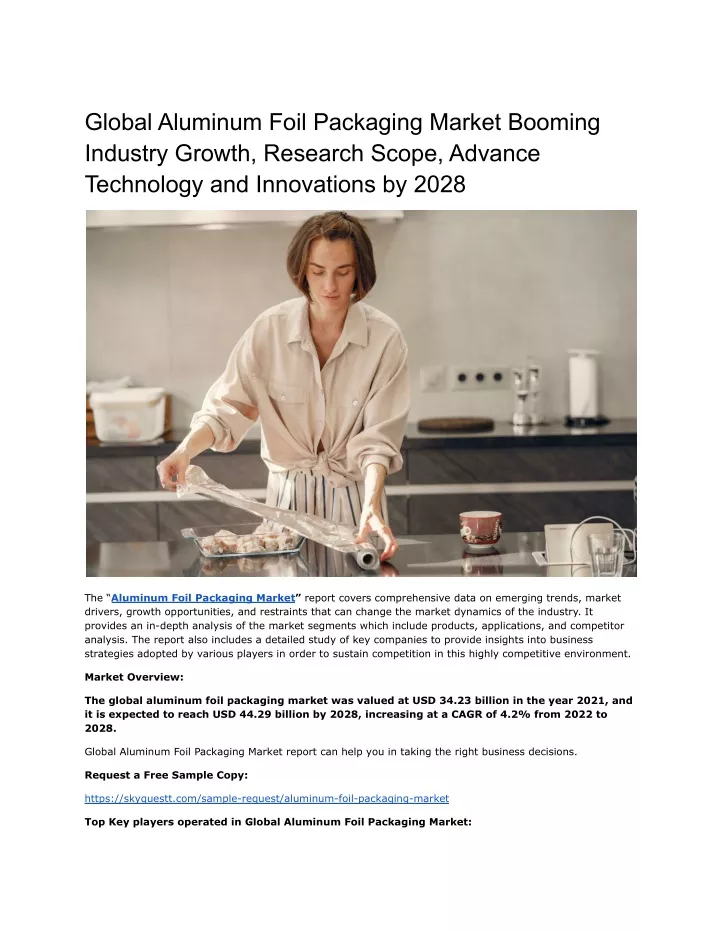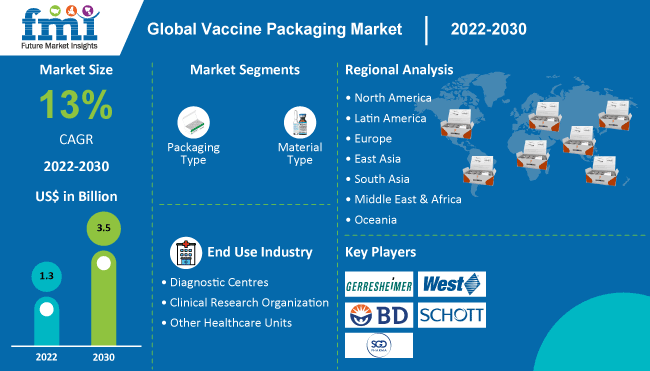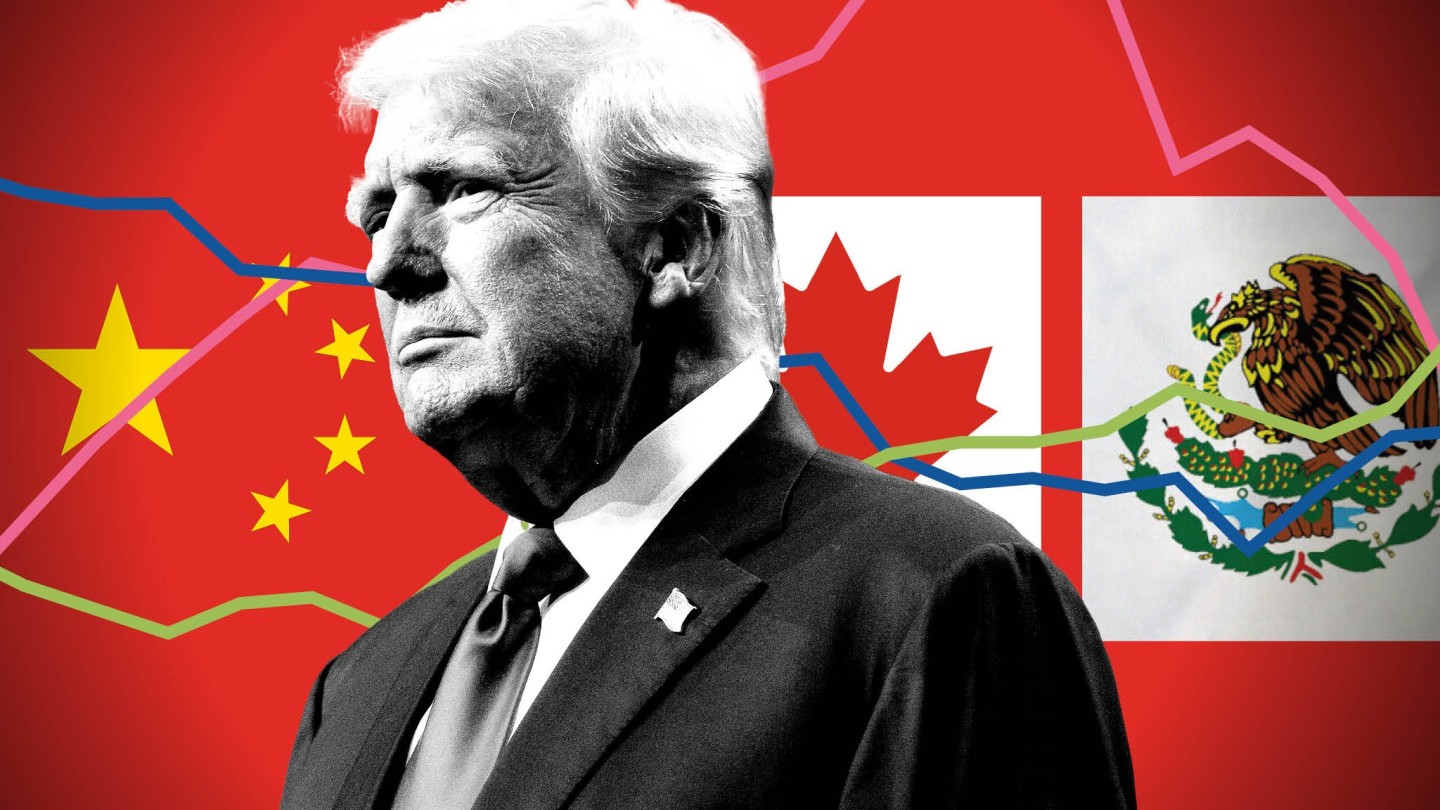Vaccine Packaging: Market Trends And Booming Demand

Table of Contents
Growing Demand for Temperature-Sensitive Vaccine Packaging
The critical need for maintaining the vaccine cold chain throughout the entire supply chain is driving innovation in temperature-sensitive packaging solutions. Many vaccines are highly sensitive to temperature fluctuations, and even short periods of exposure to extreme temperatures can compromise their efficacy and safety. This necessitates robust and reliable packaging that ensures consistent temperature control from the manufacturing facility to the point of administration.
Cold Chain Logistics and its Impact:
Maintaining the cold chain is paramount for vaccine integrity. This involves:
-
Increased use of temperature indicators and data loggers for real-time monitoring: These technologies provide continuous monitoring of temperature throughout the shipment, generating valuable data for optimizing cold chain logistics and identifying potential breaches. Real-time tracking allows for immediate intervention if temperature excursions occur.
-
Growth in insulated containers, shippers, and thermal blankets: These passive packaging solutions utilize insulation materials to maintain a stable temperature for a specific duration. Advancements in insulation technology are leading to longer holding times and improved reliability.
-
Development of passive and active temperature-controlled packaging: Passive systems rely on insulation materials, while active systems incorporate cooling elements, such as refrigerants or phase-change materials (PCMs), to maintain the desired temperature range. Active systems offer greater control but are often more complex and expensive.
-
Detail: The choice of temperature-sensitive packaging depends on several factors, including the type of vaccine, transportation distance, and environmental conditions. Regulatory bodies like the World Health Organization (WHO) provide guidelines for maintaining the cold chain, and manufacturers must comply with these regulations to ensure the safety and efficacy of their products. This includes rigorous testing and validation procedures to verify the performance of the chosen packaging solution under various conditions.
Advancements in Vaccine Packaging Materials
The vaccine packaging industry is increasingly focusing on sustainability, reducing its environmental footprint. This involves a shift towards eco-friendly materials and packaging designs.
Sustainable and Eco-Friendly Options:
-
Increased adoption of biodegradable and recyclable materials: Bioplastics derived from renewable resources, such as corn starch or sugarcane, are gaining popularity as a sustainable alternative to traditional petroleum-based plastics. Recyclable materials are also being incorporated to minimize waste and promote a circular economy.
-
Focus on reducing packaging waste through efficient designs: Minimizing packaging size and weight reduces transportation costs, lowers carbon emissions, and decreases the overall environmental impact. Efficient designs also optimize the use of materials, reducing waste.
-
Exploration of alternative materials with enhanced performance characteristics: Research is ongoing to identify and develop new materials that offer improved barrier properties, thermal insulation, and durability while maintaining environmental sustainability. This includes exploring materials like paper-based packaging and innovative composite materials.
-
Detail: The transition to sustainable materials presents both challenges and opportunities. While bioplastics and recycled materials offer environmental benefits, they may require adjustments in manufacturing processes and quality control procedures. The cost of sustainable materials can also be higher initially, but the long-term environmental and economic benefits often outweigh the upfront investment.
Technological Advancements in Vaccine Packaging
The integration of smart technologies is transforming vaccine packaging, improving supply chain management, and enhancing product security.
Smart Packaging and Digitalization:
-
Use of RFID (Radio-Frequency Identification) tags for real-time tracking and tracing: RFID tags allow for precise tracking of vaccine shipments throughout the supply chain, providing real-time visibility into their location and condition. This enhances inventory management and reduces the risk of loss or theft.
-
Development of tamper-evident packaging solutions to enhance security: Tamper-evident seals and other security features help prevent unauthorized access or tampering with vaccine products, ensuring their integrity and safety.
-
Integration of sensors for monitoring temperature, humidity, and other critical parameters: Sensors embedded in the packaging continuously monitor critical parameters, providing valuable data to optimize cold chain management and identify potential issues early.
-
Detail: Smart packaging solutions are revolutionizing vaccine delivery. The data collected by sensors and RFID tags can be used to generate insights into cold chain performance, predict potential problems, and optimize logistics. This results in improved efficiency, reduced waste, and increased confidence in the integrity of the vaccine supply chain.
Regulatory Compliance and Safety Standards for Vaccine Packaging
Adherence to stringent regulatory guidelines is crucial for vaccine packaging manufacturers. These regulations are designed to ensure product safety, efficacy, and quality.
Meeting International Guidelines:
-
Compliance with GMP (Good Manufacturing Practices) standards: GMP standards define the minimum requirements for the manufacture of pharmaceutical products, including packaging materials. Manufacturers must adhere to these standards to ensure that their packaging is safe and free from contaminants.
-
Meeting stringent safety and sterility requirements: Vaccine packaging must protect the product from contamination and maintain its sterility throughout the supply chain. This involves using materials that are compatible with the vaccine and employing appropriate sterilization techniques.
-
Adherence to labeling and packaging regulations: Clear and accurate labeling is essential for vaccine identification, storage instructions, and handling precautions. Regulations dictate specific labeling requirements that manufacturers must follow.
-
Detail: International regulatory bodies, such as the WHO and national regulatory agencies, establish guidelines and standards for vaccine packaging. Compliance with these regulations is essential to ensure the safety and efficacy of vaccines and to maintain consumer confidence in the integrity of the supply chain. Non-compliance can lead to serious consequences, including product recalls and legal penalties.
Conclusion
The market for vaccine packaging is experiencing unprecedented growth driven by increased vaccine demand, advancements in cold chain technology, sustainable material adoption, and stringent regulatory compliance. The future of vaccine packaging lies in innovative, sustainable, and technologically advanced solutions that ensure the safe and efficient delivery of vaccines worldwide. By understanding these trends, stakeholders can effectively navigate the evolving landscape and contribute to a more efficient, secure, and sustainable vaccine supply chain. For more insights into the latest advancements in vaccine packaging and how to leverage them for your business, contact us today!

Featured Posts
-
 House Of Kong Gorillaz Mark 25 Years With New Exhibition And London Performances
May 30, 2025
House Of Kong Gorillaz Mark 25 Years With New Exhibition And London Performances
May 30, 2025 -
 Analyzing Deutsche Banks Fic Trading Teams Path To Global Success
May 30, 2025
Analyzing Deutsche Banks Fic Trading Teams Path To Global Success
May 30, 2025 -
 Analyzing The Rapid Growth Of The Vaccine Packaging Market
May 30, 2025
Analyzing The Rapid Growth Of The Vaccine Packaging Market
May 30, 2025 -
 The Economic Fallout 8 Data Points On Trumps Trade Wars Effect On Canada
May 30, 2025
The Economic Fallout 8 Data Points On Trumps Trade Wars Effect On Canada
May 30, 2025 -
 Jon Joness Hasbulla Fight Injury Details Revealed
May 30, 2025
Jon Joness Hasbulla Fight Injury Details Revealed
May 30, 2025
